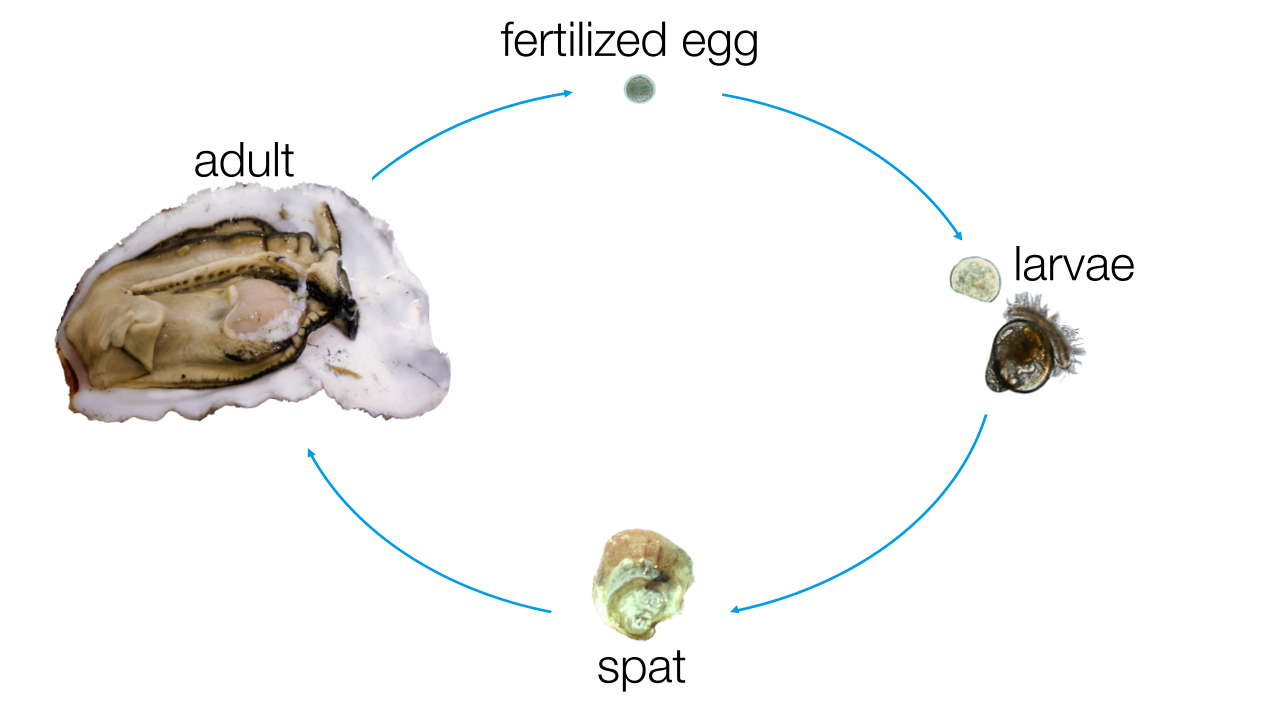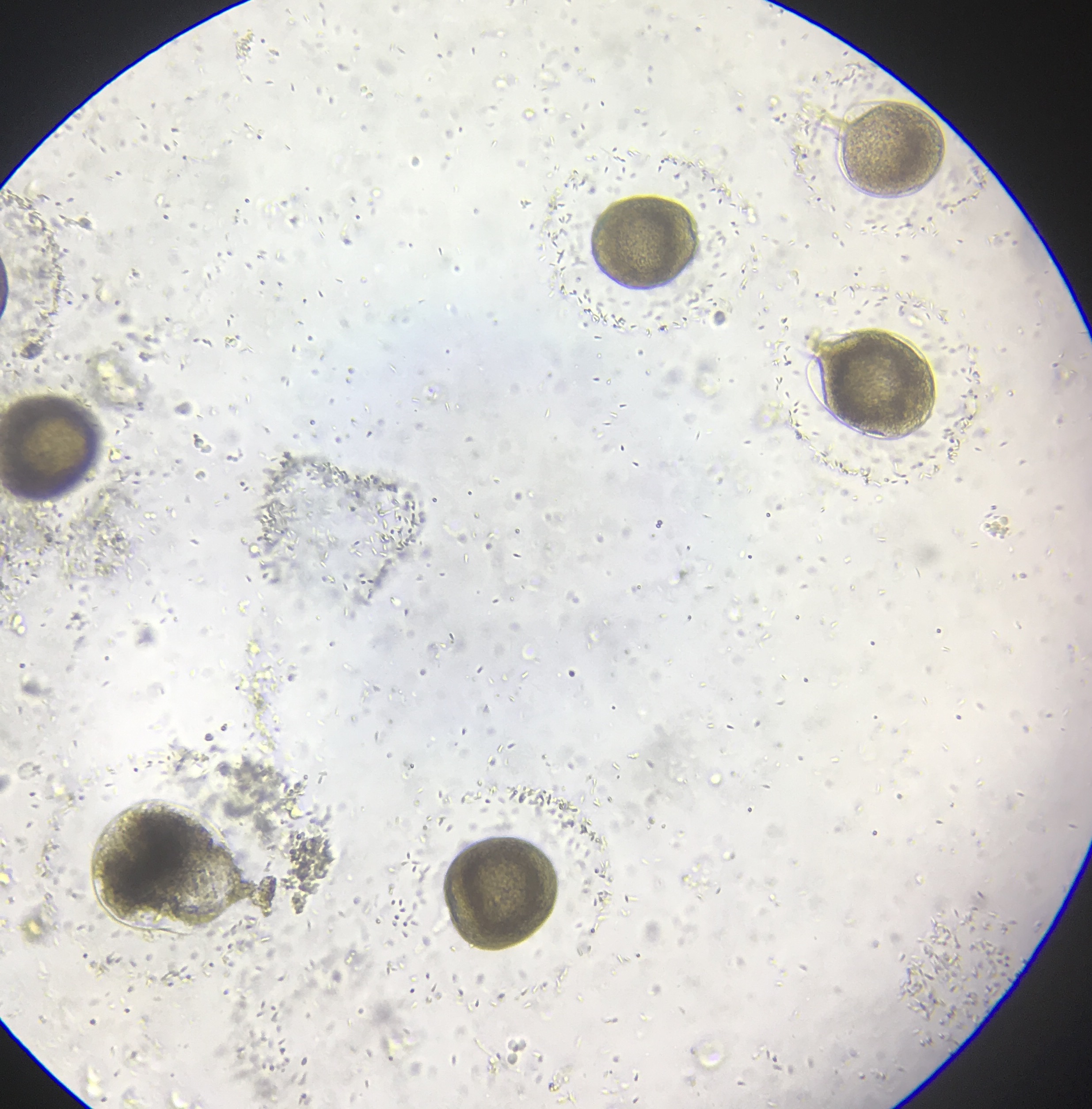The Oyster Circle of Life
In the hatchery tour video, you learned some words like broodstock, larvae, juvenile, spawning, oyster seed, and gametes. These words are all related to the oyster life cycle.

The oyster life cycle. Adult oysters spawn, or release eggs and sperm into the water. These gametes mix in the water, creating fertilized eggs. Baby shellfish, or larvae, hatch from these eggs without shells! As time progresses, the oysters get bigger and grow their own shells. These larvae then become juveniles, or oyster seed or spat, when they settle onto the bottom surface. Juvenile oysters then grow into adults you may see in the wild or at a seafood market!
Adults, which are referred to as broodstock in a hatchery, are monitored by hatchery workers who use a microscope to look at their gametes (eggs and sperm - see image below). By looking at these gametes, they can figure out if these adults have sperm or eggs.

Image of eggs and sperm as seen from a microscope. These egg and sperm are from geoduck, but eggs and sperm are what hatchery workers look for in their adult oysters and geoduck. This geoduck has both eggs and sperm, which helps show the size difference between the two gametes! The eggs are the six large, round cells, and the sperm are the much smaller dots that are surrounding the eggs.
The adults release their eggs or sperm into the water, which is called spawning. Once in the water, the eggs and sperm, or gametes, mix in the water and fertilize, creating new baby oysters! These babies are called larvae. Larvae are born without shells! The videos below show larvae after they have grown some of their shell.
Australian oyster larvae swimming & eating
This video is of two baby oysters. They both have tiny tentacle-like things coming out of their shells (called “cilia”) that help them move around and capture food.
Olympia oyster larvae "jumping"
This video is of baby oysters moving around.
Remember seeing those green and brown tanks in the hatchery video? By eating green and brown microalgae, the larvae grow into juveniles. Unlike the larvae, juveniles live on the seafloor and don’t move on their own! In a hatchery, juvenile oysters can also be called oyster seed, because they are ready to grow into adults, much like seeds grow into plants!
Life Cycle Matching Activity
Match the oyster life cycle term to the definition! Click a term, and click the match. If you got it right, both will disappear!